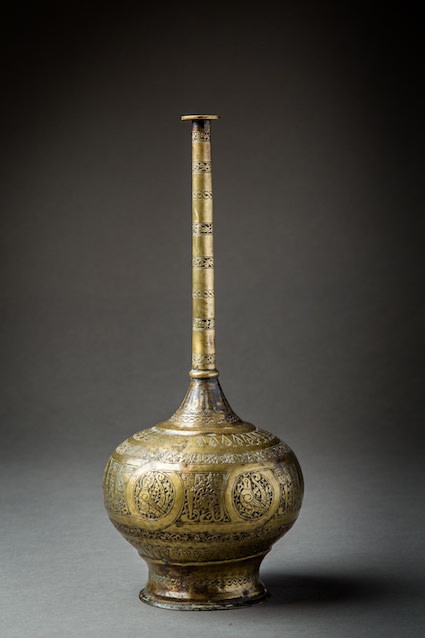Islamic Bronze Sprinkler, 11th Century CE - 13th Century CE
The use of perfumed substances has a very long presence in the history of humankind and since the earlier times perfumes are intrinsically connected to the practice of using rose-water,...
The use of perfumed substances has a very long presence in the history of humankind and since the earlier times perfumes are intrinsically connected to the practice of using rose-water, stored and applied in specially made sprinklers.
The earliest evidence for the use of such perfume containers and sprinklers comes from Roman examples in glass.
Islamic glass sprinklers from the mediaeval Islamic period (11th to early 13th century) reveal a close relation to the much earlier Roman artfacts and indeed may owe their origin to them. But while the Roman examples had very thin flat round bodies and short necks, Islamic sprinklers became wider, almost globular, with necks becoming considerably taller and tapering upwards. Other contemporary examples present bulbous or conical bodies with a tall, but somewhat wider tapering neck. Evidence for the continuity of rose-water sprinklers is well provided by surviving bronze and later by copper and silver examples in the Islamic world, where these metal vessels became enormously popular and widespread during the early medieval Islamic period. The Arabic name for these rose-water sprinklers is qum-qum and they were manufactured in numerous and diverse types.
Globular body on flaring foot with long cylindrical neck . This type of sprinklers, preserved more or less unaltered its shape but enjoyed a tremendous number of variations in its decorative treatment.
